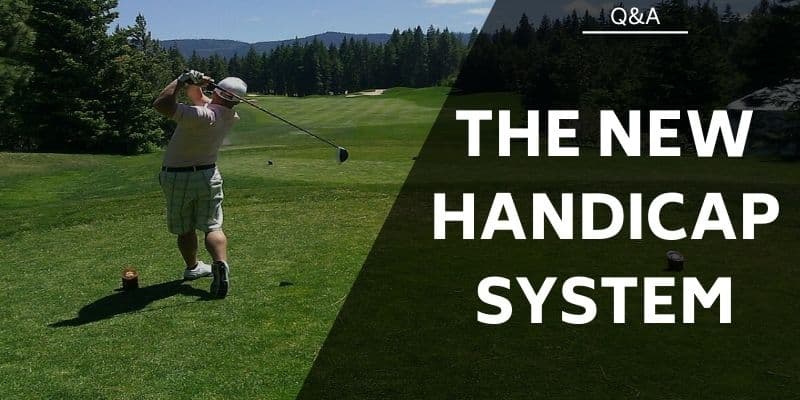Anyone that has played or watched golf will be familiar with what a caddie is and the tasks that the caddie performs for the golfer during a round. Some golfers may have had experience with forecaddies, but did not know what the terms are for such a caddie.
In this article, we will look at the history of the term, duties, and words derived from forecaddie. We will touch on the differences between a forecaddie and a caddy.
In this article, we dig deeper into the history and meaning of the golfing term “forecaddie”.
What Exactly Is A Forecaddie?
The rules describe a forecaddie as follows “A forecaddie is one who is employed by the Committee to indicate to players the position of balls during play. He is an outside agency.”
The term and high-level description were entered into the official rule books for both the USGA and R&A. Both organizations proposed that the term be eliminated from the 2019 rules.
Forecaddie History
The first reported caddy or forecaddie stems from a young boy named Andrew Dickson that carried the clubs for the Duke of York in 1681. This match was played at Cannongate which is part of the Royal Mile in Edinburgh. This story was recorded by a young local historian, William Tytler when Andrew Dickson related it to him towards the end of his life. Another reporter, Robert Clark, repeated the story in his history in 1875.
Forecaddie Role
In the early years, golf balls were rather expensive, as are the premium balls today. In an attempt to minimize the number of lost balls, golfers employed a forecaddie to stand at the approximate location that they expected their golf balls to land.
The forecaddie would then mark where the golf balls rolled out to with a flag. Sound familiar? That is what spotters do at golf tournaments shown on television.
History of “Fore”
Since the forecaddie was a reasonable distance away from the area where the golfers teed off, the golfers would yell out “forecaddie!” warning him that the ball is on its way and he must take notice and mark the ball position.
As the game evolved golfers started shortening the warning shouted to “fore”. Today, this shortened version is the acceptable way to warn other golfers, spectators, or other parties that may be in the way of your shot.
The rules of golf are clearly defined as an outside agency and not employed by the golfer directly. if the forecaddie moves a ball that has come to rest, there will be no penalty to the golfer, but the ball must be replaced in its original resting position.
Should a caddie that is employed by the golfer move the ball after it has come to rest, the golfer will be penalized accordingly as set out in the rules.
Whereas a caddie is employed by a single golfer and is responsible only to one golfer, a forecaddie is not employed by a single golfer but rather by a group of golfers or the competition committee.
The forecaddie does not provide the full set of services to a specific golfer, but his main purpose is to find and mark the ball for every golfer in the group. Typically, a forecaddie will not offer any advice to any of the golfers in a tournament, although he is not prevented from doing so in a non-tournament environment.
A caddie takes full responsibility for his golfers’ equipment by transporting it to the golf cart, carrying the bag if not on a cart, raking bunkers, replacing divots tending the flagstick, and cleaning the golfer’s equipment. A forecaddie will not be responsible for any of these tasks.
Hiring a forecaddie is more cost-effective than hiring a caddie as the cost is shared by the group or covered by the tournament organizers. When the forecaddie is hired by a group of players the cost is shared between all the golfers at the end of the round.
Fortunately, most golf clubs avail both cadies and forecaddies to golfers that want to play a round of golf.
Most recreational golfers will never encounter forecaddies during their play unless they take part in tournaments.
Forecaddie Hand Signals
As mentioned earlier the forecaddie is a substantial distance away from where the golfer plays his shot. To enable effective communication between the forecaddie and the golfers they frequently use hand signals to indicate where the ball ended up.
- Stop – the forecaddie puts both hands in the air with the palms facing the golfer. This indicates that the golfer should not proceed with the shot until further notice
- Ball in tall grass – the forecaddie joins both hands towards pointing to his left side to indicate that the ball ended up in the long grass
- Safe – the forecaddie moves both hands from side to side in front of him to indicate that the ball is safe and clear to play
- Penalty area – the forecaddie moves his right hand in a dipping downward direction towards his right side to indicate that the ball is in a penalty area
- Out of bounds – the forecaddie moves his hands from directly above his head to his right side to indicate that the ball ended out of bounds
- Did not see the shot – the forecaddie places both his hands over his eyes to indicate that he did not see the shot being played
- Provisional hit – the forecaddie crosses his arms over his torso to indicate that the golfer should hit a provisional shot
- Continue to play away – the forecaddie will rotate his right hand in the counterclockwise direction and point with his left hand towards the left side to indicate that the fairway is clear and you can proceed with your shot
Tipping a Forecaddie
It is unlikely that forecaddies appointed by the tournament organizers will receive tips from golfers. Where a forecaddie is employed by a group of golfers, the group is responsible for tipping at the end of the round. Although there is no fixed rule for the amount that you must tip, it is common for the group to pay between $50 and $100 in total.
In Conclusion
There is a distinct difference between a caddy and a forecaddie regarding their roles and duties. A caddy is in the employ of the golfer and any actions taken by the caddy will affect the score of the golfer. A forecaddie is not directly employed by any golfer and therefore he is regarded as an outside agency. No actions taken by a forecaddie can be attributed to a single golfer’s score.
I hope that you found this article insightful and that not only the history and duties of a forecaddie has become clear, but also the possible origin of the call of “fore”
Enjoy your golf and support caddies and forecaddies wherever possible to keep this tradition alive for the future.
Related Articles
Nick is the founder of GolfSpan and an avid golfer. He's not quite a pro but has over 15 years of experience playing and coaching golfers worldwide. His mission is to bring the golfing community a better experience when it comes to choosing the right golf gear and finding the right setup for your game.






